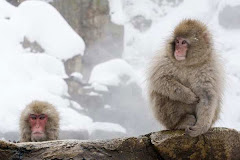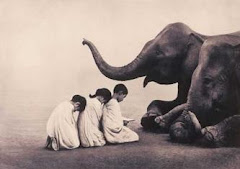The bad news first: Sara Fezziwig Chicken passed away quite suddenly on September 1st; the temperature had climbed into the 90s, and she apparently died of heat stroke. It was quite a shock to find our beautiful golden queen chicken lifeless on the ground. Sara wasn't even 3 1/2 years old, but chickens who are raised for meat or eggs are sent to slaughter much earlier than that, at about a year and a half. Sara had the longest, happiest life we could possibly give her. We're so grateful she had one more summer with the run of the backyard, after her long winter spent indoors in 2010-11, when her best entertainment was chasing raisins, ripping into bunches of kale we hung up for her, visiting the rabbits, or pecking playfully at Sergei's toes. Here's Sara and her sister Sophia, at 10 months, on a beautiful March day in 2009.
In October, cancer with a small "c," a basal cell carcinoma, was removed from my face. That's the type of skin cancer that kills practically no one as long as it's caught early, and mine was. They took it off, and that's the end of that!
Then on April 11th, we lost our little Natasha kitty to kidney problems. Steve adopted her at age 6 months or so in 1997, so she was at least 15 years old. A week before, Tashi was still racing around the backyard at top speed. Even if she spent most of the rest of her time curled in her heated bed, she was only very ill for the last few days of her life. We keep trying to remember what a long and happy life she had. We miss Tasha terribly, and so does Sergei, who now sleeps with us every night, right up on our pillows. Very cozy and warm on cool nights. Another change has been that, in January, Steve's cousin Matt moved to North Carolina. It's been quite an adjustment not having him around any more after ten years, but he's glad to be back in those beautiful mountains. Here's Matt with Sergei perched on his shoulders, since there's no pillow available!
Charm and Peridot are doing well, snuggling together, merrily digging at old phonebooks, nibbling paper in their tube, and arguing over barley biscuit treats.
Charm
They very much enjoying being petted. Some rabbits like being held, some don't, and while both Charm and Peridot like being held and cuddled, they're terrified when they sense I'm trying to pick them up, and race away. Problem is, rabbits need their nails cut every 3-4 months, so it's something that I must keep working on. And get help with their nails in the meantime. Every time I start to get discouraged about this, I remind myself that my knees actually have calluses from being on the floor with them so much!
Here's Carlie, who now shares the coop and yard with Anne and Emily; she looks much like June, but has a completely different personality. We call her our little aviator---Carlie's always looking up and flies to get where she's going at every opportunity---and she's a big talker, and has more than once been the first to sound the alarm at the sight of a hawk.
Our 50,000 bee girls and boys survived the winter very well, and Steve has been successfully treating them for mites, so they are healthy. About month ago, they swarmed, but Steve successfully coaxed the swarm into sticking around our yard, so we now have two hives.
Steve's mom and my stepfather Andy are doing okay, facing health issues that being in your 80s bring. Old age is not for sissies, as someone has noted, and they're both proving that. I don't believe I've ever posted photos of the cats that my mother rescued from the streets of Omaha, and who have now followed her over the bridge: Bonzi, Chatty, and Roo.



































